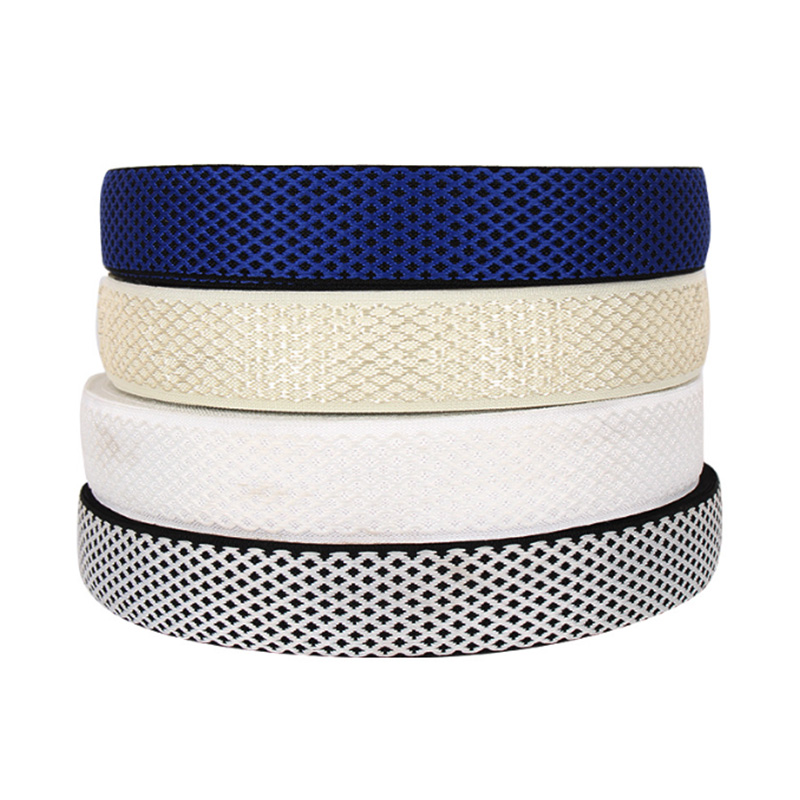Industry
 By Admin
By Admin
Combining Webbing And Elastic For Functional Apparel
When designing functional apparel, choosing the right materials can make a big difference in both comfort and durability. One effective approach is combining webbing and elastic components to create garments that offer flexibility, support, and style. In particular, long elastic straps, knitted elastic, and buttonhole elastic have become popular choices for manufacturers looking to balance function and design.

Long elastic straps provide versatility in many apparel applications. Their extended length allows designers to create adjustable features, such as waistbands, shoulder straps, or fastening systems that can accommodate various body types. These straps are often paired with webbing to enhance strength where needed, without sacrificing stretchability. The ability of long elastic straps to stretch and recover makes them valuable in activewear, maternity clothing, and adaptive apparel.
Knitted elastic is another material widely used in functional apparel for its soft texture and stretch properties. Unlike woven elastic, knitted elastic offers a smooth finish that is gentle on the skin, making it suitable for items worn close to the body. When combined with webbing, knitted elastic can provide targeted flexibility while maintaining structural support. This combination is especially useful in garments like sports bras, leggings, and fitted tops, where both comfort and resilience are important.
Buttonhole elastic serves a unique purpose in apparel, allowing for easy adjustability through the use of buttons or hooks. Its characteristic holes spaced evenly along the elastic band enable wearers to customize fit and tightness. In functional apparel, buttonhole elastic can be integrated with webbing components to provide both security and adaptability. For example, adjustable waistbands in children's clothing or medical garments often rely on buttonhole elastic to accommodate growth or changes in size.
The interplay between webbing and different types of elastic materials opens up various design possibilities. Webbing contributes strength and durability, often used in straps and reinforcements, while elastics provide flexibility and comfort. Combining long elastic straps with webbing can create adjustable harnesses or suspenders that fit securely yet allow freedom of movement. Similarly, knitted elastic paired with webbing can enhance the stretch of cuffs or hems without compromising on firmness.
Long elastic straps also play a role in reducing pressure points in apparel. When used thoughtfully with webbing, these straps distribute tension evenly, which is beneficial in performance wear and outdoor gear. For example, in backpacks or wearable equipment, combining webbing for load-bearing with long elastic straps for flexibility helps users stay comfortable during extended wear.
Knitted elastic's soft nature complements webbing, which tends to be more rigid. This contrast is useful in areas of apparel where comfort and support are needed simultaneously. For instance, the combination can be found in yoga wear or rehabilitation clothing, where flexibility must meet structure. Using knitted elastic in waistbands or leg openings, combined with webbing reinforcements, allows garments to move with the body while maintaining shape.
Buttonhole elastic adds another dimension of adjustability to functional apparel when paired with webbing. It enables easy resizing without the need for specialized tools or tailoring. This feature is practical for growing children's clothing, maternity wear, and adaptive garments for seniors or individuals with specific needs. The synergy of buttonhole elastic's adjustability and webbing's strength makes it a popular choice in these categories.
From a manufacturing perspective, combining these materials requires attention to detail. The sewing process for long elastic straps and knitted elastic must ensure elasticity is preserved, while webbing seams must withstand tension and wear. Proper integration ensures that functional apparel delivers on both durability and comfort.



 English
English Español
Español عربى
عربى Tiếng Việt
Tiếng Việt

